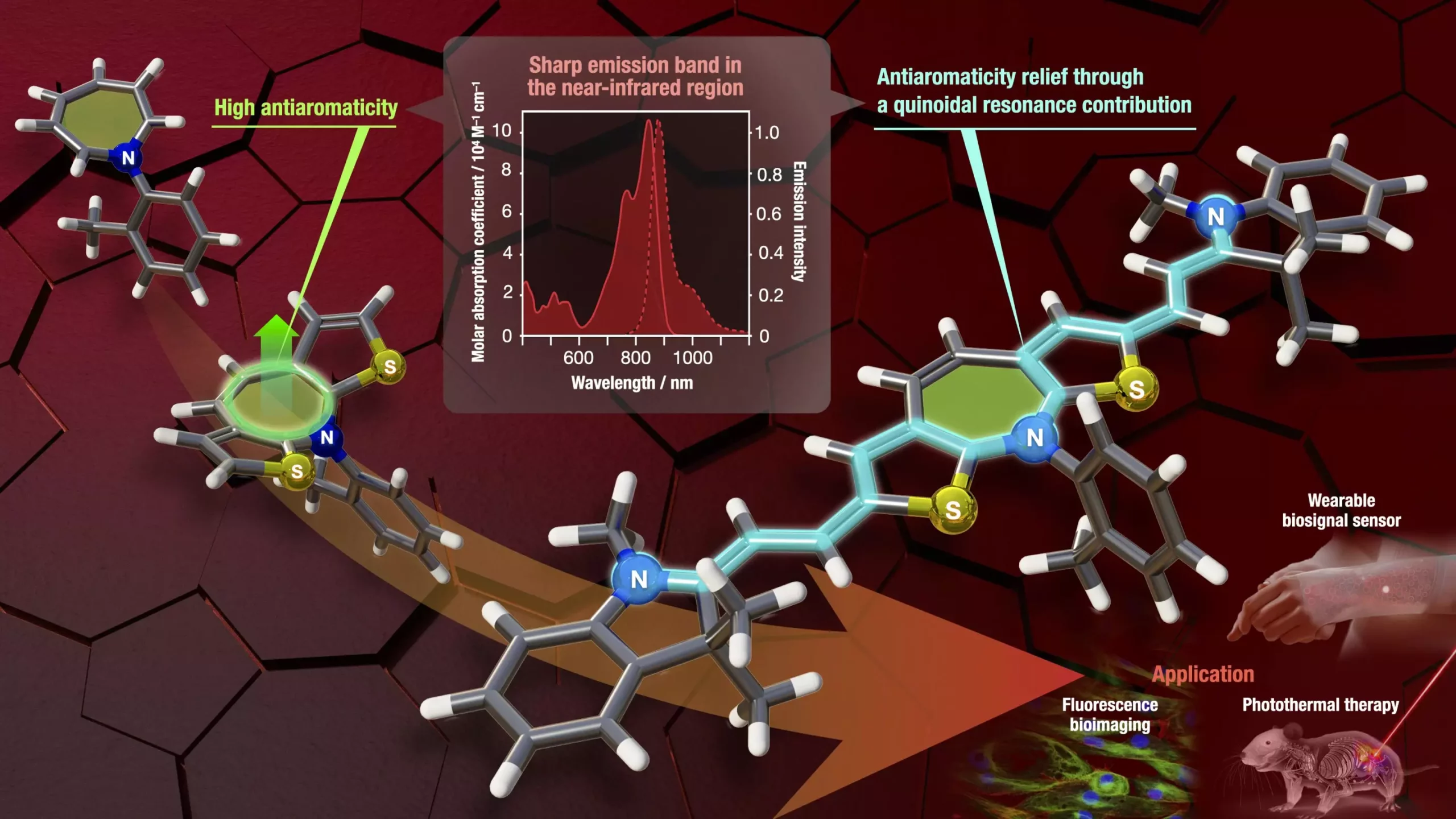In a breakthrough study conducted by a research group led by Associate Professor Masahito Murai and Professor Shigehiro Yamaguchi, new antiaromatic molecules with absorption and fluorescence bands in the near-infrared (NIR) region have been successfully developed. This groundbreaking research, published in Angewandte Chemie International Edition, holds tremendous potential for advancements in health care, optoelectronics, and materials science.
Understanding the interaction between light and matter is fundamental in spectroscopy. Absorption and fluorescence are photophysical properties that play a crucial role in comprehending how molecules and materials behave when exposed to light. An absorption band refers to the range of wavelengths where a material absorbs light, causing transitions of electrons within molecules or atoms to higher energy states. Fluorescence bands, on the other hand, pertain to the emission of light by a substance that has previously absorbed light, with the emitted light having a longer wavelength than the absorbed light.
The development of organic molecules that emit light in the near-infrared region, particularly wavelengths between 800 and 1100 nm, carries significant implications in various medical applications. This region, known as the “optical window of living tissue,” offers unique advantages such as deep biological imaging, photodynamic therapy, and photothermal therapy. Compared to visible light, near-infrared light can penetrate tissues more deeply with reduced scattering and minimal photodamage, making it invaluable in health care and life science research.
While the demand for organic molecules with absorption and emission properties in the near-infrared region is high, conventional dyes often face challenges such as reduced solubility and increased lipophilicity due to the strong interactions between their extended π-electron systems. These issues hinder the molding, processing, and application of these molecules in electronic materials and biological imaging.
The research group led by Associate Professor Masahito Murai successfully addressed these challenges by fusing thiophene, a less aromatic heterocyclic ring, with azepine. This fusion created a ring structure that effectively balanced antiaromatic and polymethine characters, increasing the likelihood of electronic transitions in antiaromatic compounds. As a result, these compounds were able to acquire absorption and fluorescence wavelengths in the near-infrared region.
The team synthesized a series of azepine derivatives with electron-accepting groups and conducted single-crystal X-ray structure analysis to reveal significant structural differences. Comparing the curved dibenzoazepine with the highly planar dithienoazepine analog, it was observed that the latter exhibited absorption and fluorescence at longer wavelengths, surpassing the 700 nm threshold.
To further demonstrate the utility of the molecular framework, the team synthesized a dithienoazepine with cationic indolium groups. This compound displayed a strong absorption band at 846 nm and a narrow fluorescence band at 878 nm. These findings open up promising avenues for the development of materials with strong absorption and fluorescence properties in the near-infrared range.
The potential applications of this research span a wide array of fields, including fluorescence imaging, sensing, and materials science. In particular, the focus is on deep-tissue imaging and non-invasive diagnostics. These advancements underline Nagoya University’s commitment to pushing the boundaries of science and innovation in order to improve healthcare using cutting-edge technology.
The successful development of antiaromatic molecules with absorption and fluorescence bands in the near-infrared region marks a significant advancement in the fields of health care, optoelectronics, and materials science. The ability to emit light in the near-infrared range opens up exciting possibilities for deep biological imaging, photodynamic therapy, and photothermal therapy. With further research and application, these near-infrared luminescent materials have immense potential to revolutionize the medical industry and enhance non-invasive diagnostics. The collaborative efforts of Associate Professor Masahito Murai, Professor Shigehiro Yamaguchi, and their research team exemplify the spirit of innovation and determination to improve healthcare outcomes through scientific breakthroughs.


Leave a Reply